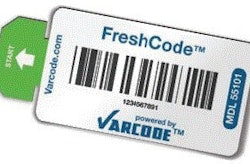
Annually, companies cumulatively post hundreds of billions in equipment downtime costs and unnecessary repeat visits by their field service technicians. By utilizing reliable knowledge management, field service teams can achieve higher first-time fix rates, improved service level agreement (SLA) compliance and better profit margins.
For companies that operate and service complex pieces of equipment, field service operations can consume significant total lifetime costs of heavy equipment. In fact, maintenance and repairs typically constitute the largest portion of the operating expense for such equipment. Field service is a cost center, with 70 percent to 90 percent of the total lifetime cost of heavy equipment found in maintenance and repair. In the U.S., companies cumulatively post a $53 billion loss per year as a result of unnecessary repeat visits by their field service technicians.
Unscheduled maintenance—or those repairs on unforeseen equipment-related breakdowns or failures—is particularly expensive. In fact, those repairs can cost three to nine times more than planned maintenance events due to technician road calls, expensive downtime, missed customer targets, and/or poor customer satisfaction.
In industries like oil and gas, where nearly 50 percent of maintenance activities are due to unscheduled maintenance, companies must be able to leverage new technologies and data in order to reduce downtime and deliver sustained competitive advantage.
“One of the biggest challenges is getting service technicians and service engineers the right kind of information that they need to solve problems— effectively and efficiently,” says Paul Hamilton, IHS Markit’s executive director of Global Technical Sales & Services, “be it proactive, preventative or corrective maintenance.” The latter presents particularly steep challenges for organizations that are asked to solve immediate problems on the fly, but that may lack the onsite knowledge and expertise needed to meet those customer mandates.
Identifying Costly Inefficiencies
Searching for information and sifting through data are time-consuming, inefficient processes that service technicians and call center representatives spend upwards of 40 percent of their time doing. In fact, even the most senior technicians need to search for repair and part information.
For example, it’s not unusual to see technicians rifling through paper manuals while sitting in their trucks, on the tarmac or at the plant—all with the goal of trying to determine if the manual and repair schematics are accurate (and the right version), for the model, year and condition of the asset needing repair.
The inefficiencies don’t end there. Technicians must also consult procedures, instructions, standards, service bulletins, and reference documents scattered across their organization’s service lifecycle management, enterprise content management, and other disparate systems. This is a persistent problem for field technicians, 41 percent of which say the “inability to integrate data in the field with enterprise systems” is an ongoing issue, according to a recent survey.
Other times, technicians are forced to call in to field service experts for additional support and guidance. All of these activities consume valuable time and resources in industries where budgetary and time constraints are common.
Improving First-Time Fix Rates
With one-in-four field technician visits requiring a follow-up visit, improving first-time fix rates and shortening the time it takes to repair equipment become strategic imperatives for companies in heavy industries. Those companies that take the steps to close these gaps not only improve their bottom lines, but they also enhance asset availability, increase equipment uptime and improve customer satisfaction levels. In the oil and gas industry, for instance, every week that a well is out of commission offshore represents a $7 million loss for the operator. For the 1.2 well shutdowns that occur every day in the U.S., 23 percent are maintenance related and 92 percent of these are unplanned shutdowns.
“When a product is failing or a production line is down, service techs have to be able to solve those problems quickly,” says Hamilton. “It’s about managing the workflow—via service lifecycle management or product lifecycle management—that wraps around some type of problem or maintenance issue.” To do this, engineers and service technicians must work through a series of steps, all of which are focused on getting equipment up and running to customer requirements.
Engineering Workbench from IHS Markit fits and integrates into those workflows, and also optimizes information delivery in a way that gets vital information into the hands of the engineers and technicians that need it. Applicable for both high-volume/low-cost products and low-volume/high-cost products—and everything in between—the platform helps technicians solve problems quickly and confidently without the need for additional internet research, phone calls or support.
An Inside Peek at What’s Really Going On
It’s not unusual for Hamilton to get an “inside peek” at how companies typically handle information management for their knowledge workers, and the usual picture isn’t very pretty. In fact, it’s highly disjointed, has morphed over time, and isn’t very effective for today’s fast-paced, high-demand business world. Service technicians, for example, often have to search through myriad, disparate systems (i.e., many internal knowledge sources as well as external knowledge sources) to get what they’re looking for. “It’s kind of crazy,” says Hamilton, “but that’s the typical world in which many service technicians live today.”
By leveraging reliable knowledge management, field service teams achieve higher first-time fix rates, improved SLA compliance, and better profit margins. And by equipping service technicians with relevant knowledge, those techs can more readily diagnose and resolve problems; improve their utilization and productivity; and solve more customer problems on the first visit. This, in turn, results in better customer service experiences and higher product uptime—both of which help improve the organizational bottom line.
For example, a leading airline was experiencing repeated rework because its maintenance engineers couldn’t find information quickly or correspond fixes across teams and locations.
The airline provided examples of unscheduled maintenance resulting in 75+ hours of downtime due to its inability to find correct information.
Engineering Workbench helped the company federate search across its many systems and data repositories, while also providing research and knowledge discovery tools that helped technicians quickly find the information they needed. As a result, the airline has significantly improved its fleet uptime and ability to comply with airworthiness mandates.
Not-So-Best Practices
In most cases, companies that want to optimize field service information delivery start by attempting to consolidate all of their data into a single source. “The problem with that is it’s a job that’s never done,” says Hamilton. “As soon as you think you are finished, something else pops up that needs to be consolidated.” Most companies then begin to develop a common taxonomy, but that process is both expensive and arduous (and doesn’t always produce the desired results).
“I’ve heard this from many companies around the world that cannot settle on a taxonomy that works for their businesses, service technicians, and engineers,” says Hamilton, who sees Engineering Workbench’s semantic engine, which understands natural language, as the best solution to this and other challenges associated with field service information delivery. “Our solution doesn’t just index words as most other search engines do,” says Hamilton. “It reads and understands the words; the language in the document. By understanding the language inside the documents, the solution can dynamically structure the search results based on language rather than predefined taxonomy and structure, thus resulting in lower costs related to knowledge consolidation, management, and structuring/organization. And it gets to the correct answer more quickly.”
Improving the Way Techs Solve Problems
Companies have invested tens of millions of dollars in content management systems and enterprise search, yet their engineers and technical personnel can’t find the information they need, in the context of the problems they are trying to solve. So, companies spend millions more tagging, scrubbing and organizing information.
There is a better way. Engineering Workbench, the engineering intelligence platform, helps organizations improve the way technicians in the field solve problems, allowing field service to become a source for revenue rather than a cost center.
By leveraging reliable knowledge management, field service teams achieve higher first-time fix rates, improved SLA compliance, and better profit margins. And by equipping service technicians with relevant knowledge, those techs can more readily diagnose and resolve problems; improve their utilization and productivity; and solve more customer problems on the first visit. This, in turn, results in better customer service experiences and higher product uptime—both of which help improve the organizational bottom line.




















